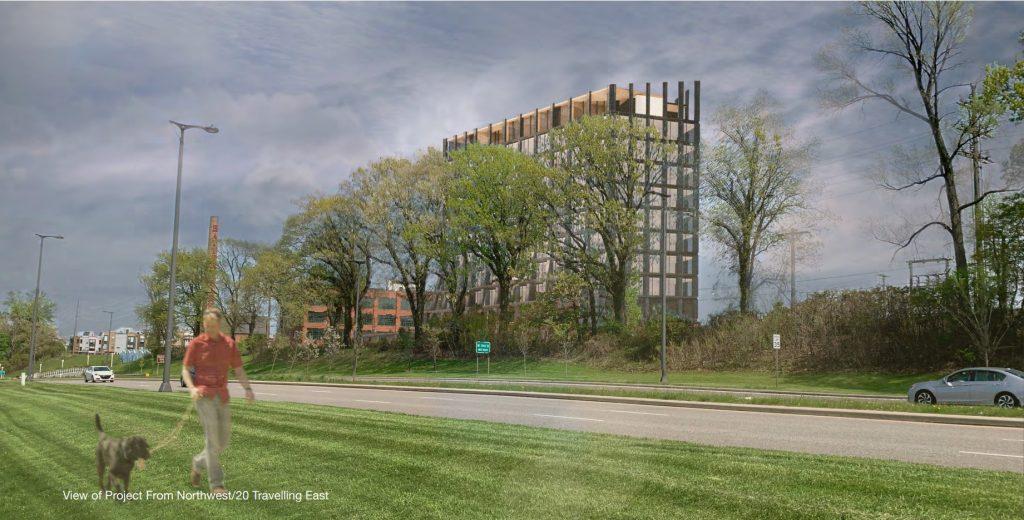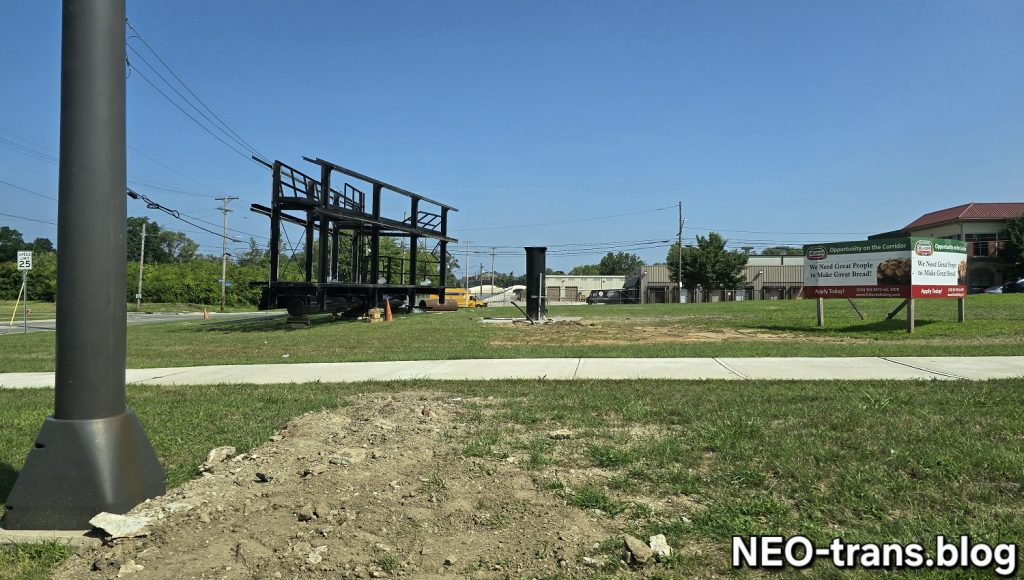Without state financing and a tax exemption for its project, the developer of a $175 million, mixed-used development has decided to scale back the project by about one-third — at least at the outset.
Harbor Bay Real Estate Advisors, LLC is hoping for the city to approve a conventional, 15-year, 100-percent tax abatement for the residential portion of its Market Square project. If that happens, a seven-story apartment building with ground-floor retail would be located at the corner of Lorain Avenue and West 25th Street in Cleveland’s Ohio City neighborhood.
But without a tax exemption for the entirety of the roughly 500,000-square-foot development, the 150,000-square-foot, 10-story office building is going to have to wait for more signed leases and an as-yet-unidentified form of public subsidy before it can be built.
That building was expected to increase the daytime population of the Market District with 1,000 office workers at a transit-accessible location, thereby boosting business at the West Side Market as well as at local restaurants and shops, said Harbor Bay’s Project Director Dan Whalen.
“We had some leasing done in the (office) building, but there was still a ways to go,” he said. “All we can do is keep going forward and treat the office (building) as a possible second phase. Hopefully, once companies see the timber in the flesh on the residential building, they’ll get excited about the potential and want to consider talking (about leasing).”
Market Square is proposed to be built with timber framing. It’s a construction technique that is more expensive at the outset, but saves up to 40 percent in ongoing heating and cooling costs. And it is more environmentally friendly than manufacturing steel and concrete for traditional structures.
That’s why the Ohio Air Quality Development Authority (OAQDA) was willing to finance the project and give it a tax exemption. But the city, school district and Cleveland Metroparks voiced their opposition, blocking the OAQDA request.
Instead, with timely city approval of the residential tax abatement, Whalen anticipates being able to start construction on about 335,000 square feet of the project with minimal delay. Construction of expanded water lines and sanitary sewers could begin in the first quarter of 2020.
Demolition of the existing Market Plaza retail strip will begin as soon as KeyBank can move into its new location, Whalen added. KeyBank is relocating to the West 25th Street Lofts development, at the southwest corner of West 25th Street and Church Avenue, next to Bookhouse Brewing. Other retailers in the plaza have found new homes.
“The office (building) is on hold until we can basically pre-lease a building with tenants, or one big tenant, in the future,” Whalen explained. “And we will need to determine how to finance it because Cleveland office rents don’t pencil without substantial public financing assistance.”
That’s also why a big reason why the nuCLEus development has stalled — a lack of public assistance for constructing new, market-ready office buildings. Nearly half of nuCLEus’ square footage is proposed to be offices. The last new office tower built in or near downtown Cleveland was the 21-story Ernst & Young building in the first phase of Flats East Bank in 2012.
Nearly half of the $270 million cost of the first phase of Flats East Bank, or $130 million, was publicly financed. That included loans and grants from the City of Cleveland, Cuyahoga County, Cleveland-Cuyahoga County Port Authority and the State of Ohio.
 |
| The existing Market Plaza retail strip along West 25th Street is due to be demolished in the coming months – just as soon as KeyBank’s new store just up the street is ready (Google). |
Another large source of funding for Flats East Bank’s first phase was the EB-5 “investor visa” program. While an exact figure wasn’t available, up to $30 million from that program was used to finance Flats East Bank’s construction. The Cleveland International Fund, which pools investor visa funding for local projects, has had to scale back its activity due to recent problems.
How can the city aid these stalled, new-construction office projects which cost as much to build as those in New York or Chicago due to prevailing construction wages, yet command low Cleveland rents? When asked that question, Ward 3 Cleveland Councilman Kerry McCormack chose to instead defend the city’s jurisdiction on whether it should offer tax abatement.
“I support common-sense incentives to bring in jobs, development and housing, but allowing the state to completely strip a local municipality of its authority is never going to be supported,” McCormack said. “I am working closely with Harbor Bay right now to get a great project over the finish line.”
“Our position is that we don’t really want to be adversarial with the city,” Whalen emphasized. “What’s done is done and we need to turn the page. We are in complete partnership with the city and success to us means building a world-class project at this corner in very short order.”
END






Comments are closed.